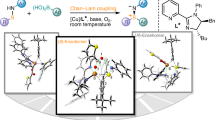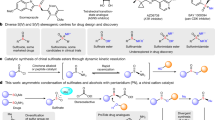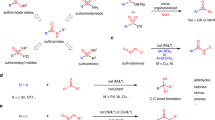Abstract
IN view of the present interest in the trial of Sulphanilylguanidine for the treatment of bacillary dysenteries1 it may be useful to direct attention to a convenient method for the preparation of this substance by the fusion of sulphanilamide with dicyandiamide which we described some years ago. In our original description of this reaction2 it was assumed that the substance isolated was formed by the addition of the cyanamide group at the N4 position to give 4–sulphonamidophenylguanidine; NH: (NH2) CNHC6H4.SO2NH2; actually addition takes place at the Nl position to give Sulphanilylguanidine, NH2C6H4.SO2NH.C(NH2): NH completely identical with the product recently obtained by Marshall et al.3 by the interaction of p–acetylaminobenzesulphonyl chloride and guanidine. Marshall's synthesis leaves no doubt about the correct constitution of the substance, which is confirmed also by the insolubility of the substance in alkali and the development of colour on diazotizing and coupling.
Similar content being viewed by others
Article PDF
References
Marshall, E. K., Bratton, A. C., Edwards, L. B., and Walker, E., Bull. Johns Hopkins Hosp., 94 (January, 1941).
Buttle, Dewing, Foster, Gray, Smith and Stephenson, Biochem. J. 32, 1101 (1938).
Marshall, Bratton, White and Litchfield, Bull. Johns Hopkins Hosp. 67, 163 (1940).
Author information
Authors and Affiliations
Rights and permissions
About this article
Cite this article
DEWING, T., SMITH, S. Sulphanilylguanidine. Nature 148, 24 (1941). https://doi.org/10.1038/148024a0
Issue date:
DOI: https://doi.org/10.1038/148024a0
This article is cited by
-
Industrial method for the preparation of p-aminobenzenesulfonylguanidine (sulgin)
Pharmaceutical Chemistry Journal (1976)



